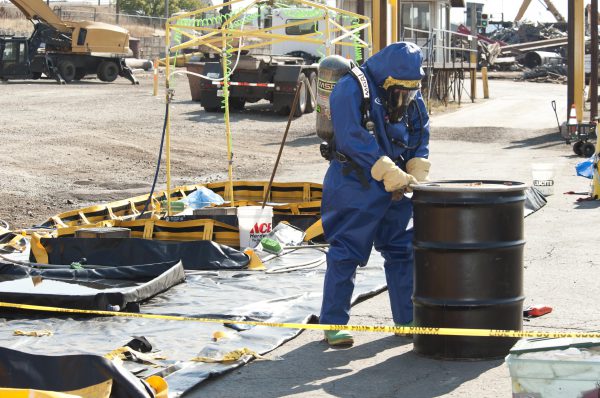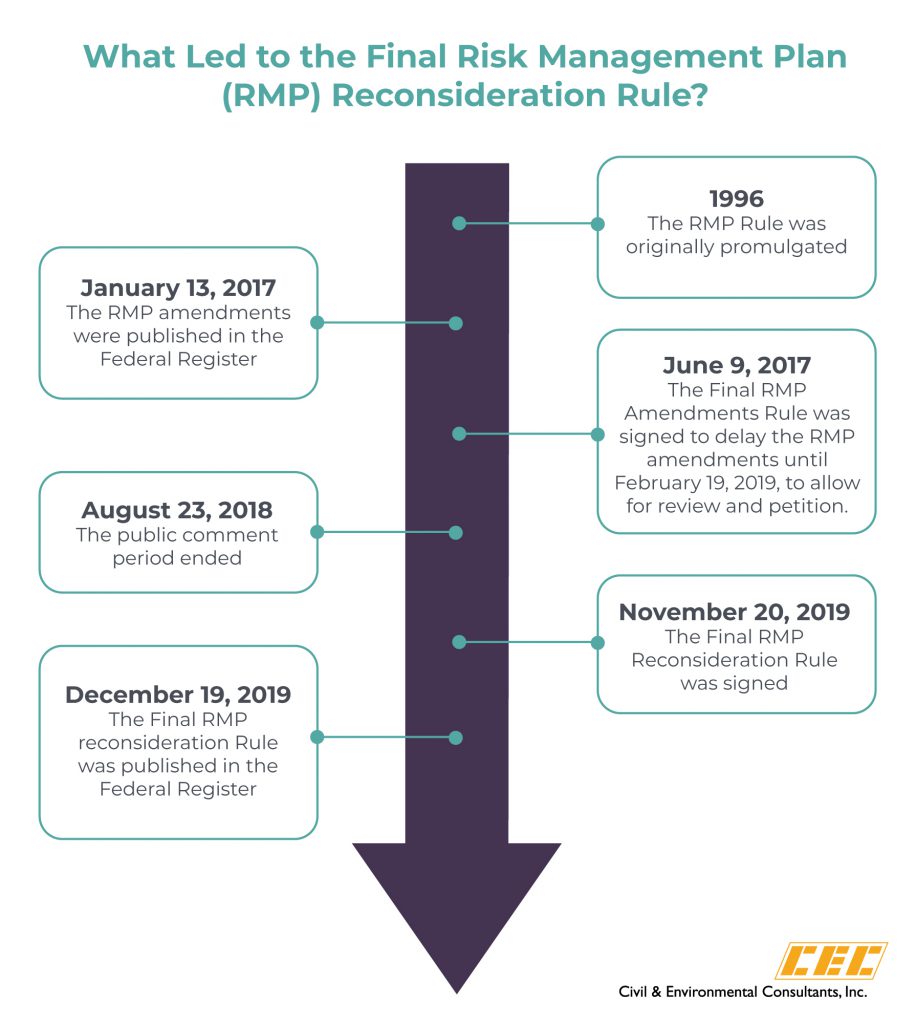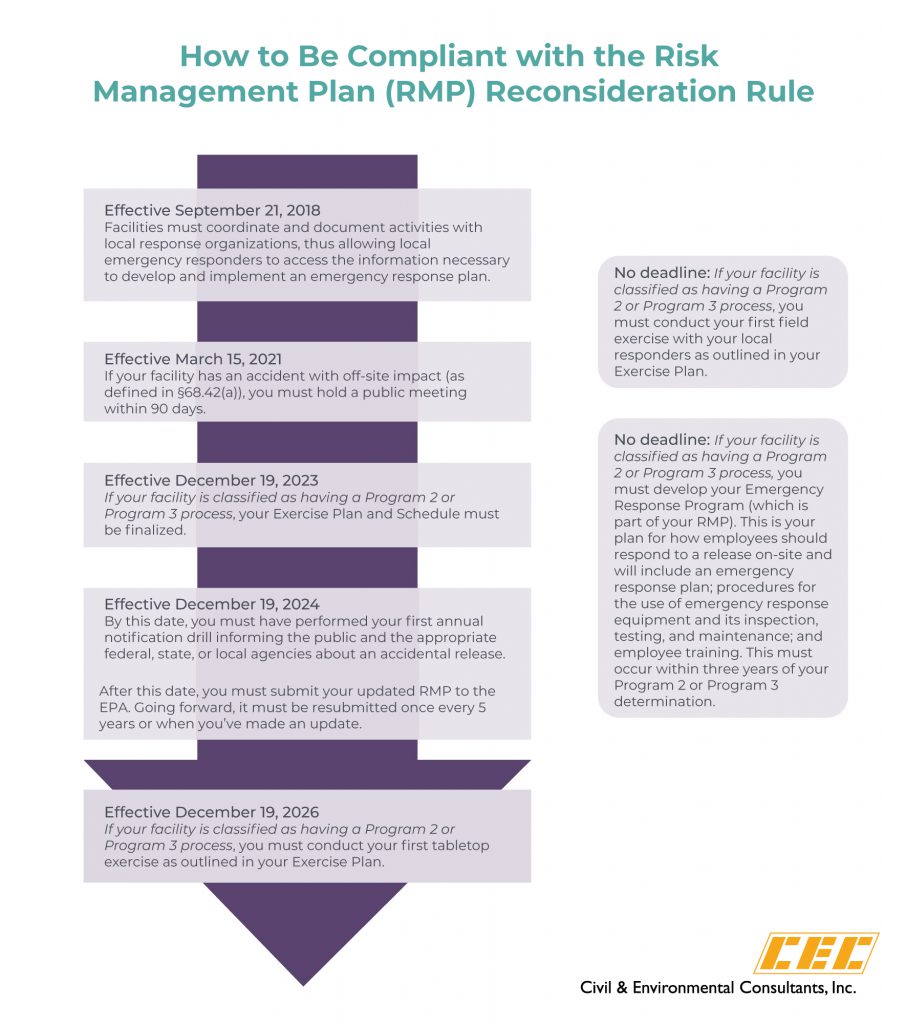Section 112(r) of the Clean Air Act Amendments requires the U.S. Environmental Protection Agency (U.S. EPA) to publish regulations and guidance for chemical accident prevention at facilities that use certain hazardous substances. These regulations and guidance are contained in the Risk Management Program (RMP) rule. This rule requires facilities that use extremely hazardous substances above threshold quantities to develop a Risk Management Plan which:
- Identifies the potential effects of a chemical accident;
- Identifies steps the facility is taking to prevent an accident; and
- Spells out emergency response procedures should an accident occur.
The list of extremely hazardous substances subject to the threshold determinations for RMP preparation are provided at 40 CFR Part 68.130.

On November 20, 2019, the final Risk Management Program Reconsideration Rule was signed by EPA Administrator Andrew Wheeler and was published in the Federal Register (FR) on December 19, 2019. The rule was developed to:
- Improve collaboration between emergency responders and 12,500 affected facilities nationwide (those that store regulated substance defined by the RMP Rule);
- Eliminate unnecessary requirements for those facilities; and
- Evaluate security risks of the proposed RMP amendments.
This final rule rescinds or modifies the Obama-era amendments EPA made to the rule in 2017 in favor of Trump-era provisions that are considered to be less costly and more focused on a subset of facilities. Other requirements were retained as originally proposed.

Rescinded (Considered Impractical, Unnecessary, or Too Costly for Facilities)
- Requirement for third-party audits
- Requirement for a safer technologies and alternatives analysis (STAA) to be completed
- Requirement to conduct and document an incident investigation root cause analysis
- Requirement for facility chemical hazard information to be available to the public on request
- Other minor Prevention Program changes
Modified/Retained
- Enhanced local emergency coordination: Effective September 21, 2018, facilities must coordinate and document activities with local response organizations, thus allowing local emergency responders to access the information necessary to develop and implement an emergency response plan.
- Emergency exercise: An annual notification drill will be required to be performed. The first annual drill must be completed by December 19, 2024.
- Tabletop and field exercises: Facilities are required to develop plans for conducting emergency response exercises by December 19, 2023. Tabletop exercises will help the facility and local responders understand the actions required to respond to an accidental release; these exercises will be required to be completed at least once every three years. Previously, field exercises were required to be completed once every 10 years; now, facilities can simply discuss with local responders to determine an applicable time frame.
- Facility public meetings: Within 90 days of an accident with off-site impact (as defined in 68.42(a)), a facility must hold a public meeting. Any applicable accident that occurs after March 15, 2021, will be subject to this requirement.
So how do you remain compliant?

The EPA released an accompanying RMP Reconsideration Final Rule Fact Sheet.
If you have questions on this rule, or you would like assistance with RMP Rule compliance, please contact Amber Isaac (aisaac@ceceinc.com or 412-489-0196) or Leah Blinn (lblinn@cecinc.com or 412-249-1607).
Post a Comment